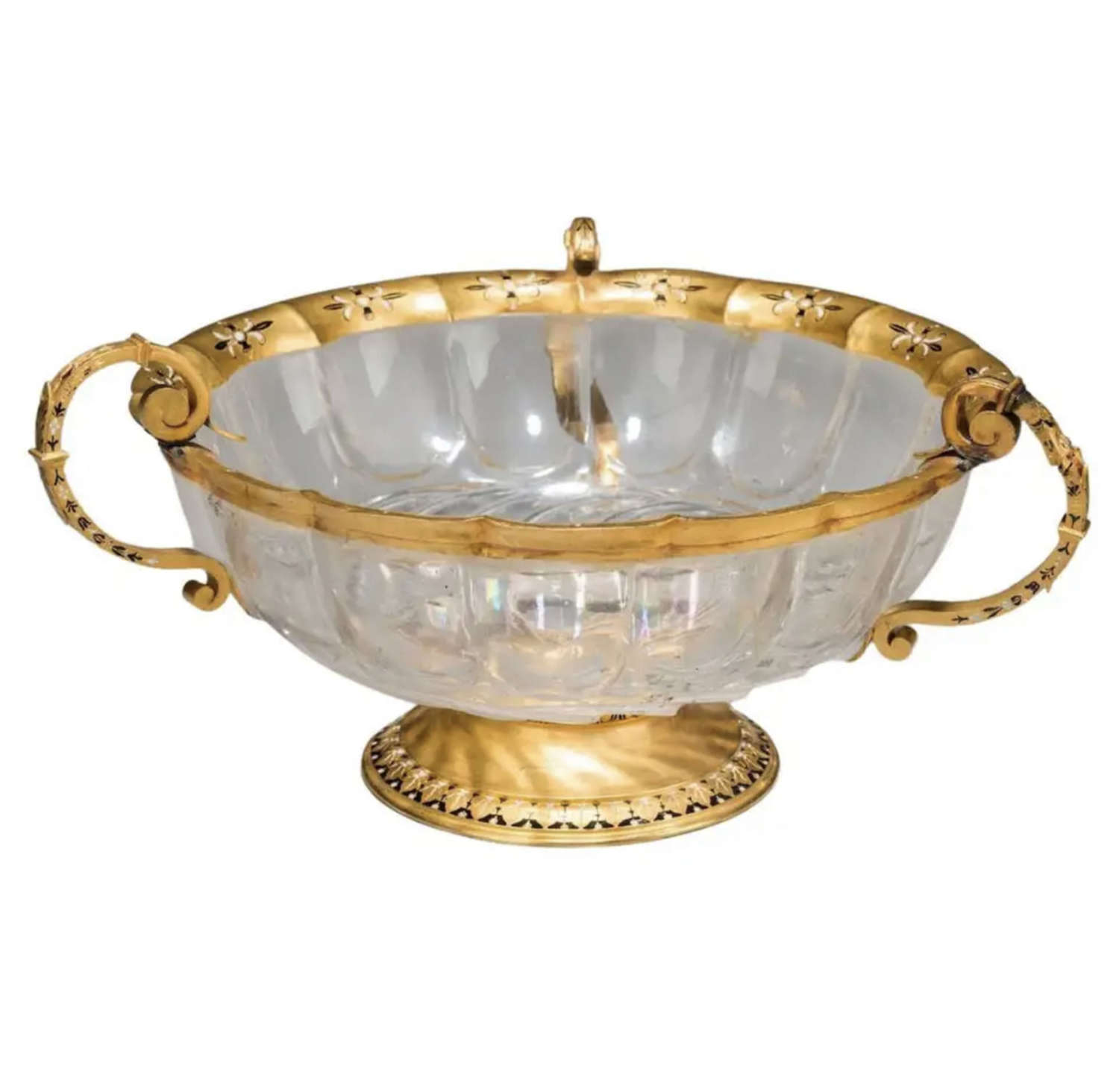
Rare 14th Century Rock Crystal Bowl:Mounted with 24 Claret Gold
Code: P0726351
Dimensions:
Rock crystal vessels were highly demanded and valuable in Mediaeval times. Inventories from European royal houses and the highest aristocratic families detail the important and sophisticated collections of ewers and bowls. Rock crystal has also been used extensively in religious art. Fine European reliquaries were also made of Rock Crystal including gems, enamel and other precious materials. The work of rock crystal is very ancient. The materials has been worked and valued for its solidity and its purity: it has been believed to be water ice permanently frozen. Our superb example is a gold-mounted rock crystal bowl with enamel. The items origin is not clear and various features and characteristics may led us to think of different origins and periods of creation. A single piece of stone mounted with gold could be a Milanese work. Although the cut could be French as similar pieces belonged to the French royalty (especially the art lover Duc de Berry, (1340-1416)). French and Italian crystal cutters have been active at the same time and it is often difficult to differentiate their works. Islamic art also influenced European artists. The famous Fatimid treasury provided examples of their sophistication and quality. The seven ewers carved for the Fatimid Imans (known as "The Magnificent Seven") display impressive quality of both rock crystal and enamelled mounts. Even though not identical to works by French silversmith Jean-Valentin Morel who was appointed goldsmith to Queen Victoria in 1852 or Reinhold Vasters (1927-1909) another renown German goldsmith who embellished older rock crystal items, there are similarities between these works. Both reduce their use of colour to black and white on pure gold mounts. Moreover the black enamel design is quite similar. Also, no gems are included and no human figure is represented. Sotherby''s described our bowl as a "German Rock crystal bowl with later gold mounts, 15th century." Other items from the period from Germany or Austria are usually silver mounted and the decorations are more colourful and include gems or human figures but they have in common enamel motifs. In our case, the gold foot, handles and rim could date from the 1900s. An expert has established the foot, handles and rim are pure gold. The goldsmith responsible for the improvement of the bowl is possibly the most famous Reinhold Vasters whose work has been displayed in the greatest museums such as the V&A in London and the Metropolitan Museum of Art in New York. The Rock Crystal bowl we have is gold mounted. The gold shows in enamelled details that are black and white. The gold handles are also enamelled with black acanthus-like leaves. The enamelling method could be "champleve" or "painting metal". The metal that is usually preferred is copper but these techniques are also applied to gold. The bowl itself could be from the 14th century. It''s cut reminds of an estimated 14th century rock crystal ball bearing the Buoncompagni family arms. What they have in common is the relief and the spiral shape of the bases. As for our bowl, the rock crystal is clear and is not carved. There are no animals of natural scenery. The items from Venice have things in common with our bowl but the mounts vary. The mounts are more easy to date. The question is how old is this rock crystal bowl. It has shapes recalling Roman dishes, implying a date of creation as old as the 3rd century. Craftsmen from France and Venice could obtain search results in the 13th and 14th century.







